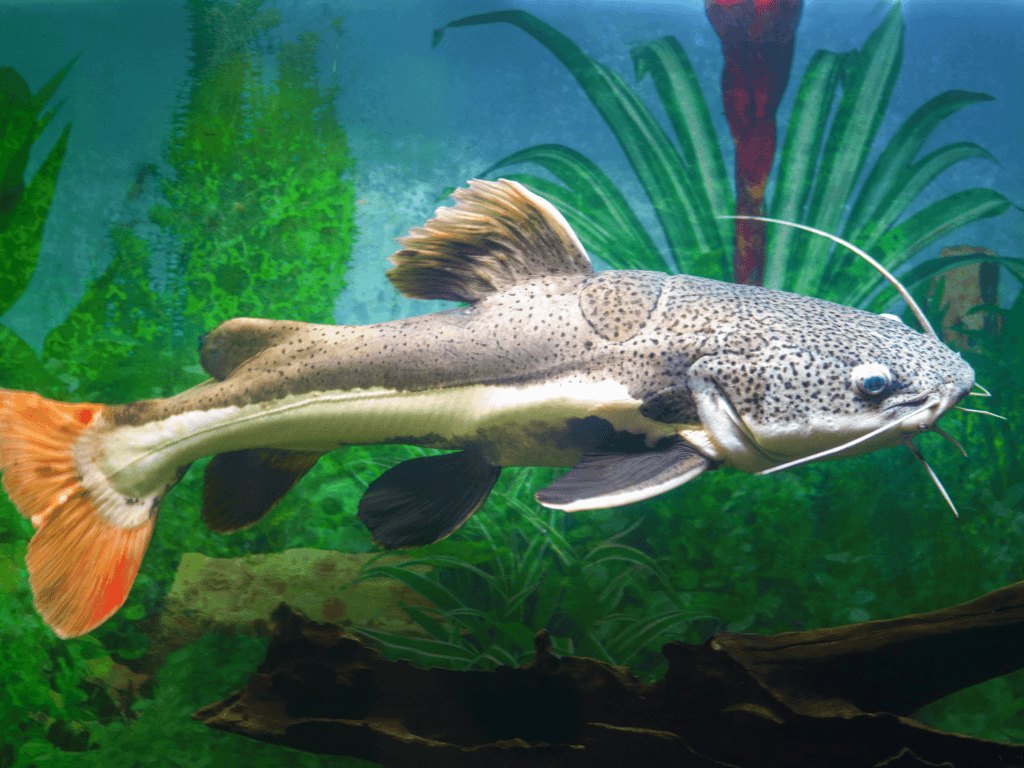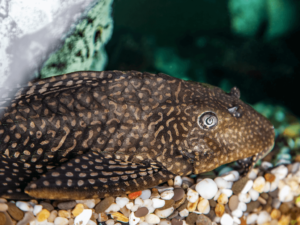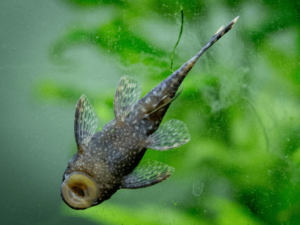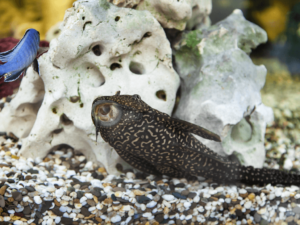Spotted Raphael Catfish: A Complete Guide to Care, Tank Requirements, and Feeding Tips

Welcome to our comprehensive guide on caring for the Spotted Raphael Catfish! This fascinating species of catfish is known for its unique appearance, peaceful temperament, and playful behavior.
As a responsible owner, it is important to understand the specific tank requirements, feeding habits, and origin of the Spotted Raphael Catfish to ensure their health and well-being.
In this article, we will cover everything you need to know about caring for these beautiful fish, including tips on choosing the right tank mates.
Whether you are a new or experienced fish owner, this guide is sure to provide valuable insights into this captivating species.
Overview of Species and Behavior/Temperament
Aquarists of all levels of experience can enjoy the Spotted Raphael Catfish, a unique species that offers an array of interesting behaviors and temperaments. These fish are peaceful and effortless to take care of, making them an ideal choice for beginners. They are active during both day and night, and they are social creatures that enjoy exploring their environment and interacting with other fish.
The Spotted Raphael Catfish is also known for its docile nature. They are not aggressive to other fish, and they usually get along well with other species. Their calm demeanor and simple upkeep
 make them a great option for those just starting out in fishkeeping.
make them a great option for those just starting out in fishkeeping.
From its inquisitive personality to its low-maintenance requirements, the Spotted Raphael Catfish is an attractive choice for any aquarium.
They can provide hours of entertainment and are sure to be appreciated by their owners. Whether you're a seasoned aquarist or just starting out, the Spotted Raphael Catfish is the perfect addition to your tank.
For those looking for an interesting fish that is easy to care for, the Spotted Raphael Catfish is an excellent option.
With its captivating behavior, peaceful temperament, and effortless upkeep, this species is sure to be a wonderful addition to any aquarium.
Origin of the Species
Aquarium enthusiasts around the world highly covet the Agamyxis pectinifrons, also known as the Spotted Raphael Catfish, for their attractive pattern and placid nature.
This species hails from the Amazon River and its tributaries in South America and is part of the Aspredinidae, or 'banjo catfish' family of over 150 varieties.
The Spotted Raphael has a striking look, with a dark brown to black body adorned with white spots.
Its head is flattened and its mouth broad and triangular, enabling it to forage on the tank bottom. Its fins are diminutive and rounded, and a long, thin tail propels it through the water.
Nighttime is when this feline of the fishy world is most active, adding an extra layer of mystery to its appeal. It thrives in well-oxygenated, fast-moving waters, and should be provided with plenty of hiding places in the aquarium.
The Spotted Raphael Catfish is an ideal choice for any aquarist, from novice to veteran. Its unique markings, gentle disposition, and nocturnal habits come together to create a captivating addition to any tank.
Physical Appearance of Spotted Raphael Catfish
A captivating freshwater fish, the Spotted Raphael Catfish boasts an intricate and eye-catching pattern. Its body is elongated and flattened, with a broad head and prominent barbels that jut from its mouth. It is further distinguished by a dorsal fin that has sharp spines, providing the fish with a defense mechanism.
The fish's black and white stripes provide it with an effective form of camouflage in the wild, helping it to blend in with the rocks and debris.
The Spotted Raphael Catfish is a large species, reaching a maximum of 8 inches in length. Its bony plates offer it a tough, armored look, while its fins have long pointed rays, furthering its impressive physical presence.

With a pair of large and expressive eyes set atop its head, the striped Raphael is sure to be a beautiful addition to any aquarium, whether you are an experienced fish keeper or just starting out.
The Spotted Raphael Catfish is a visually stunning fish that will add a unique and attractive element to any aquarium.
With its distinctive pattern and impressive size, it is sure to draw attention from any onlooker. Its camouflaging stripes and defensive spines make it a fascinating species that you won't want to miss out on.
Tank Requirements and Setup
To give your Spotted Raphael Catfish a happy home, there are a few elements to consider. For starters, these nocturnal creatures need plenty of hiding spots, such as caves, vegetation, and pieces of driftwood. Additionally, there must be enough space for them to swim around. A good rule of thumb is to have a 30-gallon tank per Raphael catfish, plus 10 extra gallons for each additional fish.
Keeping the water clean and healthy is also important, so invest in a quality filter and perform regular water changes. For lighting, maintain it dim to imitate their natural environment and encourage activity during the night.
Lastly, when it comes to temperature, aim for a range between 72-78°F. You can add a heater to keep it consistent.
When selecting tank mates, keep in mind that the Raphael catfish can be territorial with other bottom-dwellers, like cichlids or other catfish.
Instead, choose peaceful community fish like tetras or guppies. With the right setup and care, your Spotted Raphael Catfish will thrive in its new habitat.
Feeding Guide for Spotted Raphael Catfish
A balanced diet is essential for the health and well-being of your Spotted Raphael Catfish. These omnivorous creatures need a combination of animal and plant-based foods with high protein content and low-fat content.
To keep them nourished, you can provide them with a selection of commercial foods such as pellets, flakes, and frozen items like bloodworms, brine shrimp, and krill.
Spotted Catfish are night feeders, so it's wise to offer them smaller portions multiple times a day. Due to their hearty appetite, they can be prone to overeating, which can lead to obesity, bloating, and digestive issues. Therefore, it is important to monitor their feeding habits and behavior.

If they seem disinterested in their food or are fighting over it, you may need to separate them into different areas.
Ensuring your Spotted Raphael Catfish receives adequate nutrition is essential for their health. By providing them with a balanced diet and keeping an eye on their eating habits, you can ensure that your fish remain healthy and content.
Conclusion
In conclusion, taking care of Spotted Raphael Catfish can be a rewarding experience for any aquarium enthusiast. These talking catfish are not only fascinating to observe but also have unique personalities and behaviors.
Keeping them in a suitable tank with proper filtration and a varied diet will ensure their health and longevity.
With this comprehensive guide, we hope to have provided you with all the necessary information to create a thriving environment for your Spotted Raphael Catfish.
Happy fish keeping!

Leave a Reply